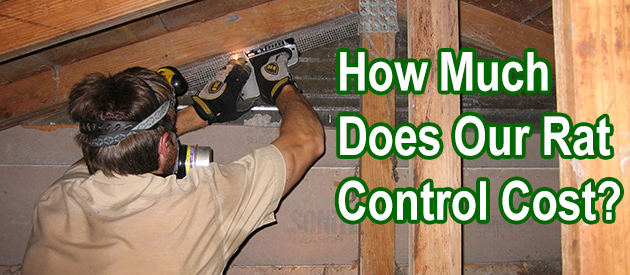Leon County, Tallahassee Rat Control Situation:
Aloha David, We are just moving to Tallahassee but own a home in Honolulu. I am writing you because there are no rodent removal companies on Oahu and I don't have anyone I can get help or advice from. We recently discovered rodent droppings in our atticat the Honolulu home. After checking the roof, eaves, etc., we found the potential entry point into the attic. It is an existing vent opening that a contractor used for installation of a hot water heater pipe that was fed into the attic. (see photo) We sealed the opening with galvanized sheeting, screwed in place, caulked and painted. The opening was sealed off September 14,2012. Subsequently, we set snap and electronic traps in the attic. The morning after the first traps were set, we caught one rat in the rat zapper. None in the snap traps. The fifth day we caught another rat in the zapper. After several days of no more trappings, we completely vacuumed the attic space with a hepa vacuum. Feeling like there were no more rats in the attic, We removed the traps. We have been checking the attic everyday since the last rat was killed, on September 21,2012 and there have been no droppings... ...until this morning when my husband checked the attic. He found one rodent pellet on a beam about a foot from the attic access panel and several more maybe six feet or so from the opening. My question is twofold: 1) is it possible for a roof rat(s) to live in an attic space for an extended period of time without access to water (over 3 weeks), and 2) wouldn't we see more than 3 rat turds if there is current activity in the attic? I really would appreciate any advice or insights you can provide. I am so fearful of rodents and will have to return to Honolulu in less than a week to take care of the house while my husband returns to work here in Florida. If you feel so inclined, you can also reach me on my cell phone. Mahalo, Frances
Tallahassee Rat Control Tip of The Week
Is Trapping Rats Legal?
When it comes to trapping rats, there has been a misconception for quite some time as many house owners think it is illegal. This is nothing but a myth, so if you are planning to get a trap to remove the rats in your home, you are legally allowed to do so.
Rats are one of the most destructive household pests. Being carriers of diseases and different types of disease-causing organisms, they contaminate the surface of your home and any of your food substances that they come in contact with. Also, these pests bring in highly inflammable materials into your home and rip off electrical cables that are capable of igniting a fire. All these clearly show how dangerous they are to you and your property and why you need to get rid of them as early as you can.
Apart from the need to get rid of this major household pest, the use of traps is the fastest and the best way to get rid of rats. Although, the use of glue traps has been labeled by PETA and The Humane Society as an inhumane way of trapping rats. With the exception of the inhumane aspect of glue traps, the use of traps is completely legal.
So if you are thinking of removing the rats in your home, you can go ahead and use a trap.


